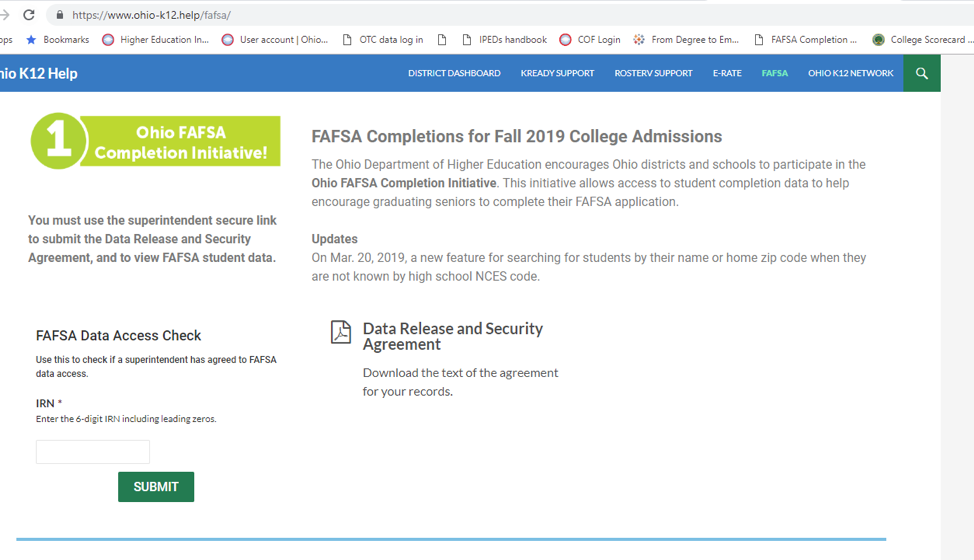In 2014, President Obama announced the launch of the Free Application for Federal Student Aid (FAFSA) Completion Initiative to help states, districts, and schools give students the support they need to complete the FAFSA form. Often the gateway to accessing financial aid for college, career school, or graduate school, the FAFSA gives students access to the nearly $150 billion in grants, loans, and work-study funds that the federal government has available. And in many cases, students are required to submit the FAFSA before they are considered for any financial aid.
In 2016, Ohio started participating in the FAFSA Completion Initiative, and today it is the first step of the state’s 3 to Get Ready campaign, coordinated by the Ohio Department of Higher Education (ODHE) to help high school students prepare for college by focusing on applying for financial aid, submitting college applications, and selecting where they’ll pursue their postsecondary education. ODHE shares with school districts specific, limited information about the students who have completed the FAFSA form. The data enables school and district partners to identify those students who have not filed a FAFSA form and better target counseling, filing help, and other resources for those students. These efforts can promote college access and success by ensuring that students, particularly those with a low family income, have access to financial aid to fund their education.
ODHE, in partnership with Management Council of the Ohio Education Computer Network (MC OECN), provides data through a secure web portal. The MC OECN K-12 Portal hosts many district initiatives, including assessment information and teacher evaluation data, so districts are familiar with the site.
One of the challenges in Ohio is that districts are legally prohibited from reporting students’ names, parents’ or other family members’ names, and addresses or Social Security numbers to the Ohio Department of Education. This makes matching the FAFSA data to the high school a difficult task that requires using specific data elements from the application. Using the Institutional Student Information Record (ISIR) data that the state receives, the National Center for Education Statistics (NCES) high school code is matched with the crosswalk to the high school and district at ODHE. Next, the data is filtered by date of birth, and the system only forwards applications for students who are 22 years old or younger. Updates of FAFSA completions are sent using a secure web service each Wednesday, so the list is refreshed weekly from mid-October through June.
District superintendents must electronically sign a data release and security agreement to gain access to the FAFSA student-level information (screenshot below). There are 462 (out of more than 700 local education agencies in the state) data-sharing agreements on file, so more than half of the districts are participating.

Once the data-sharing agreement is signed, the districts use a simple web interface with student name, date of birth, and high school to review the students’ FAFSA completion in their district. If the NCES high school code on the FAFSA application is missing, the student goes into a statewide list of “unmatched” schools so the districts can search by name and date of birth. The data are available for download to Excel for ease of manipulation.
To date, the percentage of FAFSA completions has not changed much, but the number of districts participating in the initiative keeps growing. As part of Ohio’s attainment goal that 65% of Ohioans, ages 25-64, will have a degree, certificate, or other postsecondary workforce credential of value in the workplace by 2025, the FAFSA Completion Initiative is one component of Ohio’s plan to reach that target.
